Thinking of making a deer hunting road trip this season? Looking to cash in on additional deer tags outside your home state this year? Deer hunting as a nonresident is much more expensive than it was 15 years ago when I made my first out-of-state journey. Fortunately, it’s still within reach for working-class folks. Choose a state from the following list, and you can enjoy good to great hunting without going broke. Here’s a look at our list of 10 affordable deer hunting states.
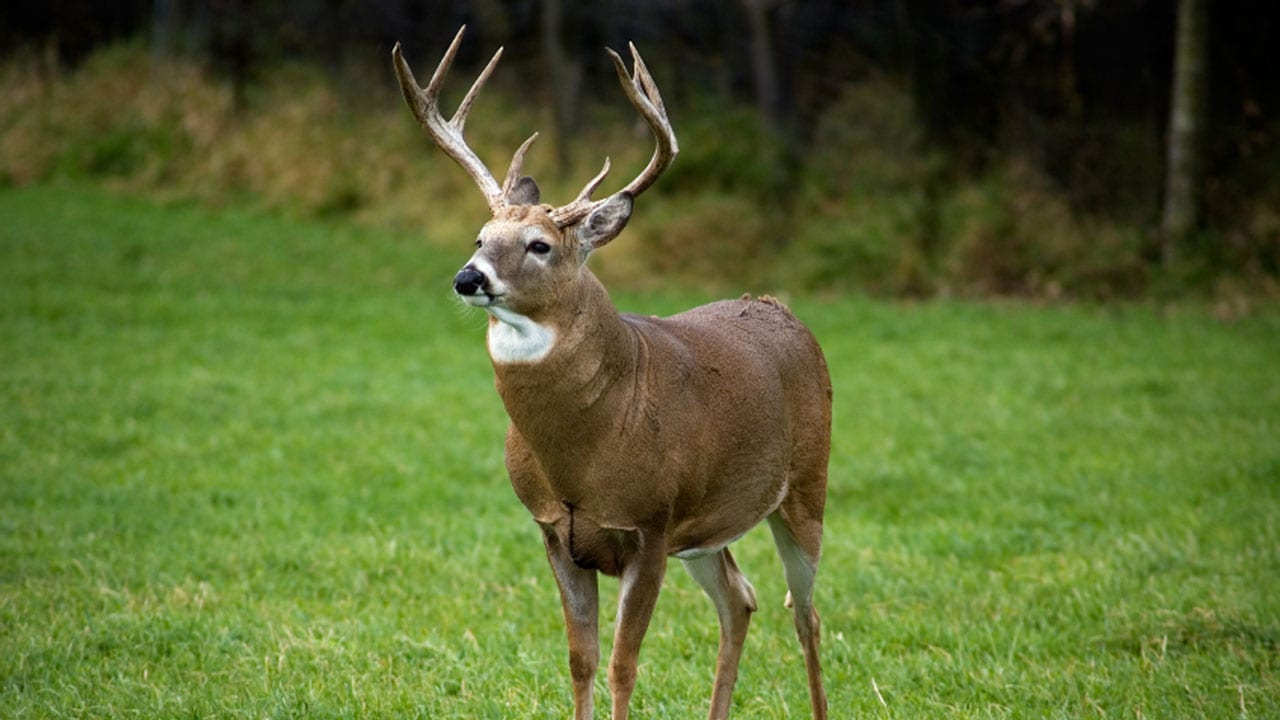
Thinking about whitetail road trip this year? Check out the states listed below for a look at some of the most affordable deer hunting states in the country.
Ohio
Nonresident fees: Annual Hunting License, $141.50; Deer Permit, $41
Resident fees: Annual Hunting License, $19; Deer Permit, $24
Visit http://wildlife.ohiodnr.gov/ for more information.
The Buckeye State annually produces some of nation’s largest whitetail bucks. Thus, one would think an Ohio deer license can be obtained only through a draw and for a premium price. However, those assumptions are false. Inexpensive tags are sold online or over the counter.
There is one hitch. Ohio’s land mass is “95 percent privately owned,” according to Clint McCoy, deer biologist with the Ohio DNR. Thus, nonresident hunters must do their homework to find places to hunt. And since Ohio has a denser human population than, say, Oklahoma — Ohio has approximately 11.66 million residents and Oklahoma has approximately 3.9 million (via United States Census Bureau) — hunters can expect hunting pressure to be a bit heavy in many areas.
“The state’s southeast portion is heavily wooded,” McCoy shared. “Bowhunters who work harder and hunt smarter can experience a quality public-land hunt in that region, though the entire state can provide good hunting opportunities.”
Ohio runs a lengthy archery deer season. It opens this fall on Sept. 29 and closes Feb. 3, 2019. Hunters are allowed a statewide bag limit of six deer. According to the deer-hunting regulations, only one may be antlered, and county bag limits apply. Further, new special regulations have been issued governing bag limits on public lands.
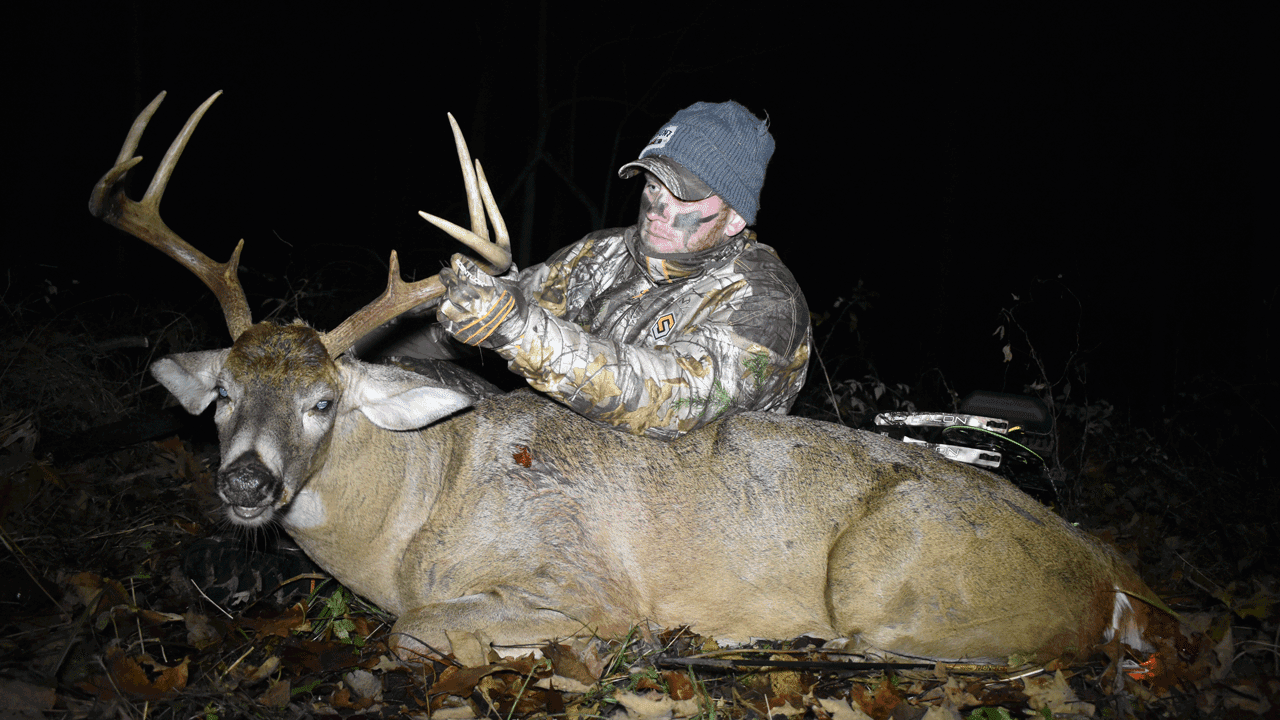
BHOD team member, Daryl Bell with his Ohio buck.
Nebraska
Nonresident fees: Habitat Stamp, $25; Deer Permit, $242
Resident fees: Habitat Stamp, $25; Deer Permit, $37
Visit http://outdoornebraska.gov/ for more information.
Nebraska features a diverse habitat mix. From the Pine Ridge hills out west to the west-central Sandhills to the river bottoms in the south and east, Cornhusker whitetailers can find habitat that fits their individual hunting styles.
The Nebraska Game & Parks simplifies the search for public hunting. Its online Public Access ATLAS denotes all public-accessible lands, plus users can switch between imagery and street views to home in on specific hunting locations. Clicking on a parcel gets you the property info and species you might encounter.
The beauty of Nebraska is its uninhabited lands. Once you leave population centers, miles often separate homes from each other. Translated, this means hunting pressure is generally very light.
Hunters who put in their time and hunt wisely stand a fighting chance of encountering a 3 ½-year-old-or-older buck. That possibility increases in the central and western half of the state — far from population centers. Wildlife management areas (WMAs) are often cultivated with food plots, giving you chances to peg bedding areas and food sources all on public ground.
Two either-sex licenses can be obtained. Further, archery deer licenses are valid statewide for either whitetails or mule deer (some exceptions apply).
Oklahoma
Nonresident fees: Deer License, $300
Resident fees: Deer License, $20; Annual Hunting License, $25
Visit https://www.wildlifedepartment.com for more information.
The Sooner State offers solid chances for a mature buck. The 2017 QDMA Annual Report states that an astounding 60 percent of bucks harvested in 2015 were 3 ½ years old or older.
Oklahoma archers can take a total of six deer, two of which may be antlered. Be mindful of special regulations specific to certain areas. Western Oklahoma also holds some mule deer, so there is opportunity for either species, though whitetails are the primary species statewide.
Public hunting areas can be found statewide, with WMAs offering the most opportunity. Detailed info on each WMA can be found at the Department’s website. Many WMAs offer prime habitat complete with bedding and nutrition. Hunting pressure ranges from light to quite heavy, depending on the area in question.
Oklahoma has approximately 920,000 acres open for public hunting. The southeast portion of the state, specifically the Three Rivers and Honobia Creek WMAs, host state’s the largest whitetail populations, according to Emily Clark of the Oklahoma Department of Wildlife Conservation. “That area has rich soils and heavy timber, which are conducive to quality hunting opportunities,” she noted.
Wisconsin
Nonresident fees: Deer License, $160
Resident fees: Deer License, $24
Visit https://dnr.wi.gov/ for more information.
Wisconsin automatically conjures thoughts of famed Buffalo County — practically a big-buck factory. Understand, though, that Wisconsin’s best deer hunting is concentrated to several regions that are highly managed by landowners. Of course, northern Wisconsin has lots of public land with patchwork private land, which makes managing for mature bucks virtually impossible.
Now, there are numerous folks who continually find Badger State success. Granted, some own and manage sizeable chunks of private land. But, some dedicated folks routinely encounter worthwhile bucks by logging extensive hours on public land, especially by hunting week days when most hunters are working.
DNR land, county land and national forests make up the bulk of public-hunting opportunities, but managed-forest land — private land enrolled in timber programs — can be overlooked.
Deer numbers are fairly strong statewide, but the state’s southern half features richer nutrition and better genetics. Look for public lands adjacent to large private parcels, and you could find yourself a hotspot.
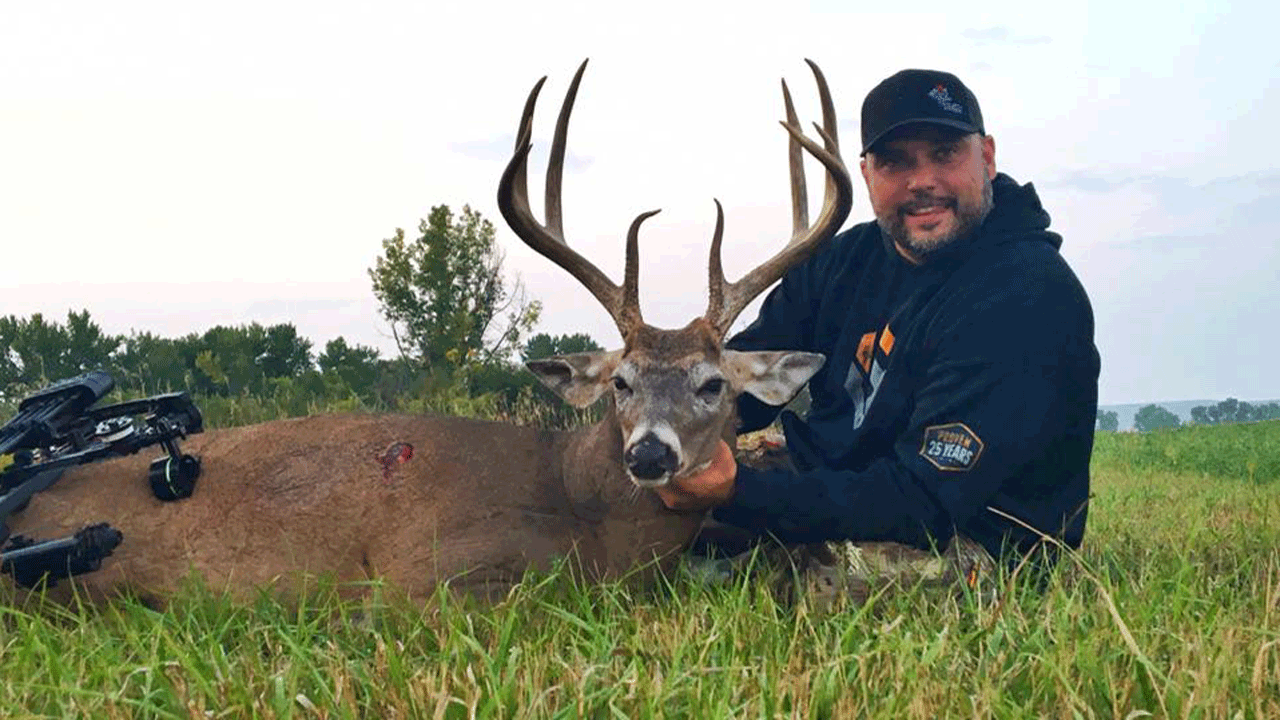
What states will you be hunting this season?
Missouri
Nonresident fees: Archer’s Hunting Permit, $225
Resident fees: Archer’s Hunting Permit, $19
Visit https://mdc.mo.gov/ for more information.
Missouri is rich with DIY hunting opportunities. More than 500 state conservation areas are scattered across the Show Me State. Detailed info on each parcel including aerial maps are located on the Department of Conservation’s website.
Missouri’s geographic location — bordering Kansas and Iowa — lends itself toward great whitetail hunting. Excellent habitat with rich nutrition and milder winters all contribute to a healthy population, though CWD and EHD have created recent scares.
According to the 2016-2017 Missouri Deer Season Summary and Population Status Report, Jefferson County came in first for antlered buck harvested by bow, tallying 435 animals. As for regions, the Southwest region tallied the greatest archery buck harvest at 3,375 animals.
The Archer’s Permit allows the harvest of two deer of either sex, although only one antlered buck may be harvested prior to Nov. 11. Two turkeys of either sex are also included. Four critters for $225 … now that’s great value.
Missouri also manages numerous counties for larger bucks. A total of 37 counties have a 4-point restriction. To make the cut, bucks must have at least one antler with 4 or more points.
South Dakota
Nonresident fees: Deer License, $286
Resident fees: Deer License, $40
Visit https://gfp.sd.gov/ for more information.
Bowhunters who want to chase deer in the Mount Rushmore State can obtain a statewide license valid for one any deer. Or, you can obtain an East River archery license and/or a West River archery license, both valid for one any deer. Add an antlerless license for an additional $80 (nonresident). All licenses must be purchased in person at the Pierre Fish & Game headquarters or by applying online.
The term “any deer” refers to either sex and either species. Yes, South Dakota is one of those neat states where you can chase muleys or whitetails on the same license. Most muleys are found west of the Missouri River, and whitetails are found statewide.
The Black Hills is a cool place to hunt with towering Ponderosa pines dotting the ridges and deep gulches/canyons. Not your cup of tea? Try the prairies or farm country. The Missouri River breaks are another likely bet.
Walk-In Hunting and Game Production Areas provide generous opportunities across the state. National forests are also productive places to look. I believe even a South Dakota resident could spend his/her entire lifetime hunting South Dakota’s public land and never cover it all. It’s such a big state with countless opportunities.
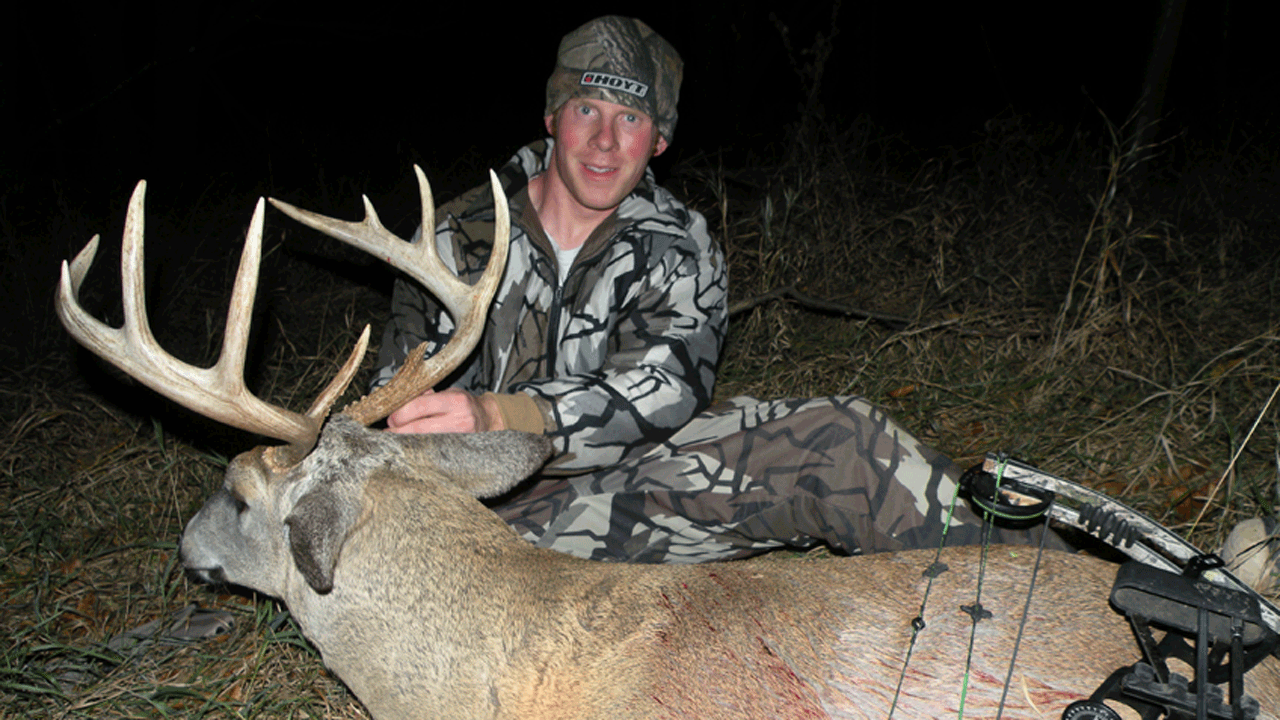
The author with a South Dakota buck.
Kentucky
Nonresident fees: Annual Hunting License, $140; Statewide Deer Permit, $120
Resident fees: Annual Hunting License, $27; Statewide Deer Permit, $35
Visit https://fw.ky.gov/Pages/default.aspx for more information.
Kentucky has recently emerged as a big-buck producer. OTC licenses and many WMAs across the Bluegrass State make it an excellent destination for bowhunters. In fact, approximately 1.6 million acres are open to public hunting.
If a velvet buck is on your bucket list, Kentucky is a great destination given its Sept. 1 opener. Bowhunters can capitalize on predictable late-summer bachelor groups. The season also runs approximately four and a half months, maximizing opportunity.
Most folks don’t realize that Kentucky’s deer hunting is an astounding success story. “In 1935, Kentucky’s deer herd consisted of 100 animals, and there were no hunting seasons between 1916 and 1956,” Mark Marraccini, spokesman for the Kentucky Department of Fish and Wildlife, shared. “The state deviated from political management to science-based management, and by 1956, the herd grew to 25,000 animals. By 1980, Kentucky only had three bucks in the Boone & Crockett Book. Today, we have more than 900,000 whitetails in Kentucky, and our hunters take approximately 50 Boone & Crockett bucks annually.”
Kentucky has plentiful deer numbers if you’re looking to fill the freezer, but world-class bucks also roam the Bluegrass State.
North Dakota
Nonresident fees: Fishing, Hunting and Furbearer Certificate, $2; Game and Habitat License, $20; Deer License, $250
Resident fees: Fishing, Hunting and Furbearer Certificate, $1; Game and Habitat License, $20; Deer License $30
Visit https://gf.nd.gov/ for more information.
North Dakota is a vast state with ample deer-hunting opportunities statewide. WMAs range in size from 2 acres all the way up to 32,890 acres. Many small parcels get overlooked, while the large parcels let you stretch your legs and hike deep to evade hunting pressure.
North Dakota has an Aug. 31 bow opener this year, making it an excellent destination for targeting velvet-antlered bucks. Find hayfields bordering river-bottom habitat, and you’ll find the bucks. According to Bruce Dillings of North Dakota’s Game and Fish Department, “whitetails transition from hayfields to row crops later in the season.
“Archery success rates range from 30-40 percent,” Dillings continued. “Taking a big, mature buck is an accomplishment, but we certainly have some impressive deer that can be had.”
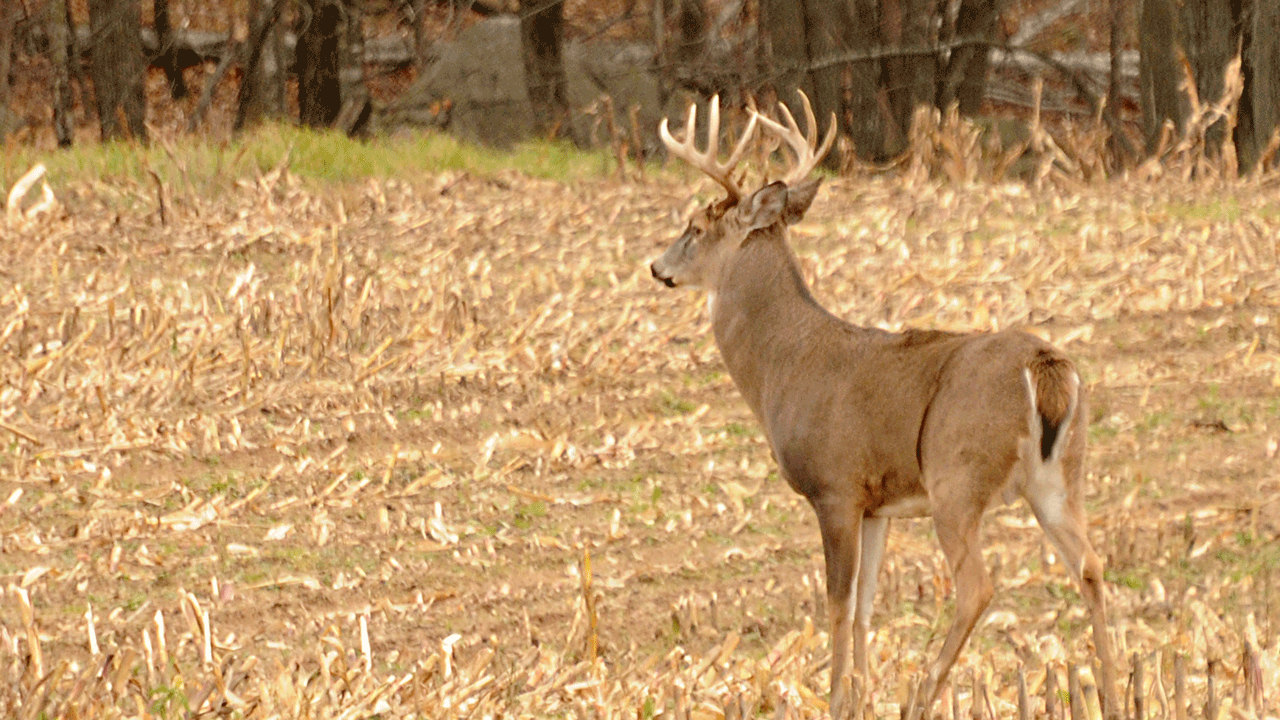
Tired of hunting at home? Putting another buck tag in your pocket by hunting another state may be more affordable than you think.
Michigan
Nonresident fees: Base License, $151; Deer License, $20
Resident fees: Base License, $11; Deer License, $20
Visit https://www.michigan.gov/dnr/ for more information.
Michigan’s archery season opens Oct. 1, 2018, and closes Nov. 14. It reopens Dec. 1 through Jan. 1, 2019. Public-hunting options are nearly endless with expansive state and national forests and Game and Wildlife Areas. The interactive MI-HUNT online map helps you easily identify public land.
Due to the large chunks of public land and the onslaught of hunting pressure during the firearms season, taking a mature buck on public land with a bow is an accomplishment, but certainly an attainable one. The beauty is that there are so many places to check out, the clear majority of it being heavily timbered.
Antlered buck harvest, according to the most recent Michigan Deer Season Summary, was highest in the southern peninsula during the 2016 season, with 99,542 bucks harvested, down from 122,489 in 2010. In 2016, DMU 332 had the highest individual unit buck harvest at 13,443 animals. One nice aspect is that Michigan does enforce point restrictions in some areas, which encourages mature-buck harvest.
No, Michigan doesn’t compare to Kentucky or Oklahoma in terms of antler potential, but it’s an affordable state for the meat hunter, or one looking to outfox a wily big-bodied, big-woods buck.
Indiana
Nonresident fees: Deer License, $150
Resident fees: Deer License, $24
Visit https://www.in.gov/dnr/? for more information.
Indiana is perhaps an overlooked options when it comes to affordable deer hunting states. Mild winters and good nutrition equate to healthy deer. It’s also sandwiched between big-buck factories Illinois and Ohio. The dirt-cheap license makes this one a no-brainer.
Indiana offers hunters numerous conservation areas and fish and wildlife areas, some large and some small. An interactive online mapping system denotes all DNR and federal properties open to public hunting.
Now, Indiana is surrounded by Chicago and Cincinnati, plus it has its own population center in Indianapolis. Look for places far away from these mega-cities, and you’ll find places capable of producing quality bucks with less pressure. In 2017, 190,300 deer hunters took the field in Indiana. Compare that to 700,000 in Pennsylvania, and you can see why Indiana is more likely to produce a quality hunt.
Hunting over bait is illegal in Indiana, which encourages deer to move naturally and feed on plots, fields, acorns and natural forbs. That simplifies the equation, especially when hunting on public lands.
Affordable Deer Hunting States – Conclusion
Give the states mentioned above a look when you’re making plans for your next whitetail road trip. They are some of the most affordable deer hunting states of anywhere in the country that offer great deer hunting opportunities at reasonable price. And more opportunities to punch tags and make new memories is hard to beat, no matter where the hunt takes you.

 By
By 



